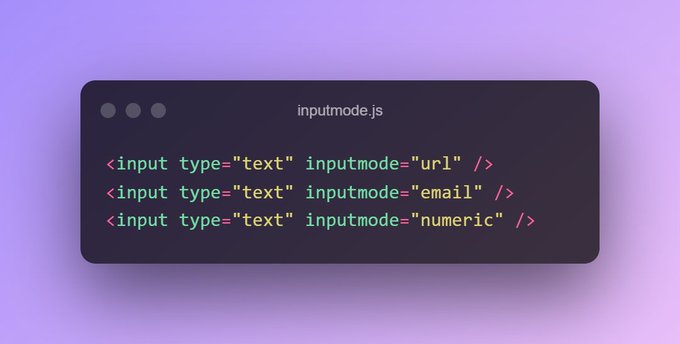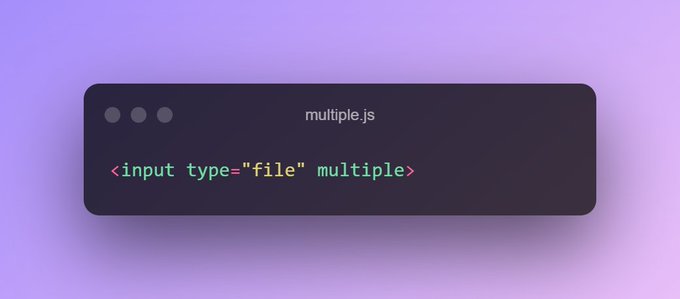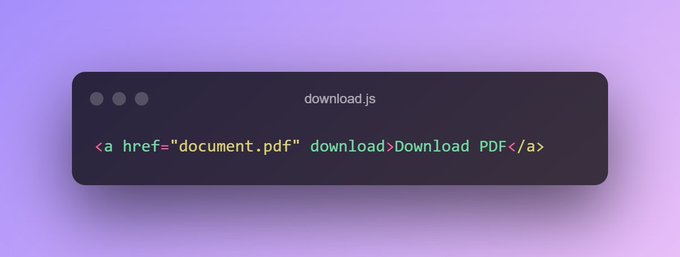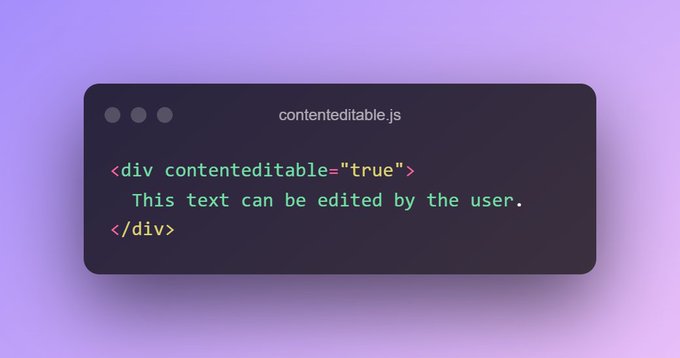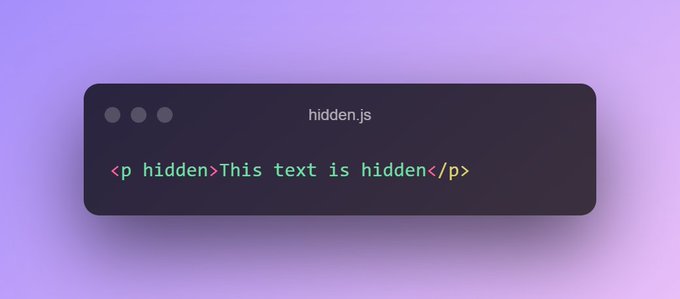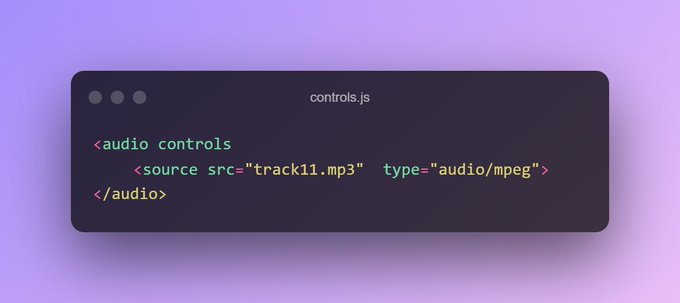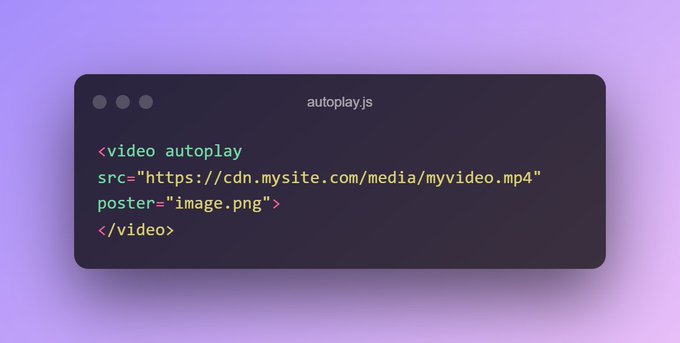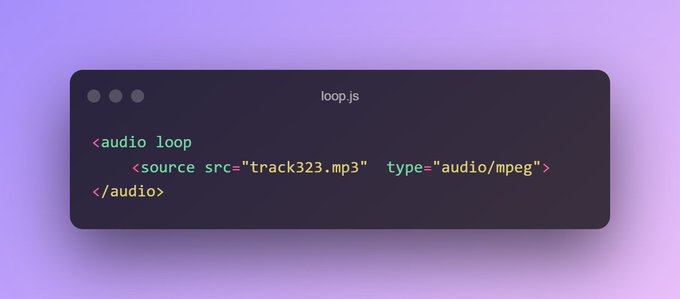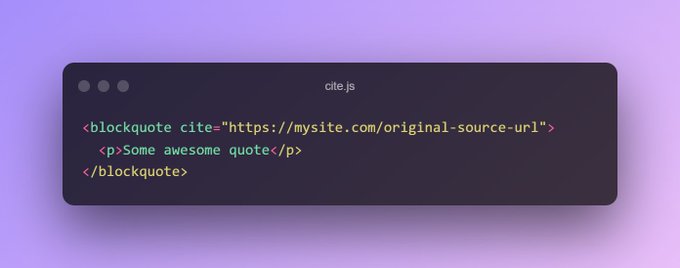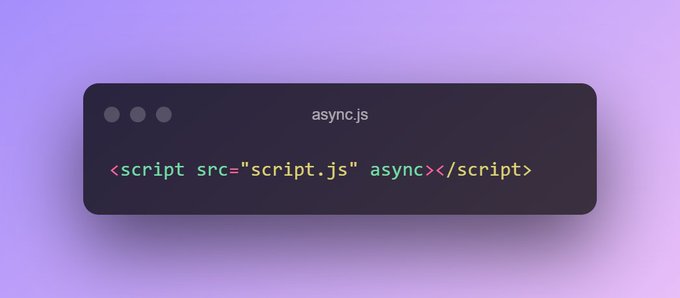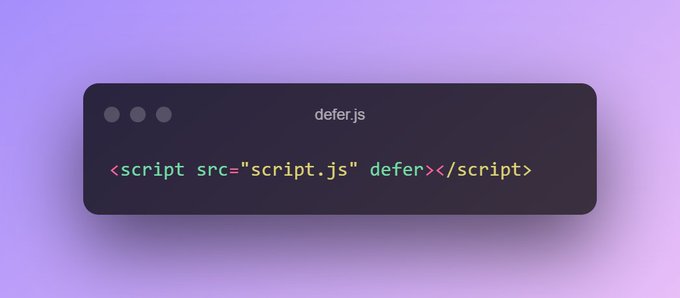
Photo by Jackson Sophat on Unsplash
21 Tags That Will Reveal The Real Power of HTML
You will be surprised :)
1. Autofocus
Indicates that the particular element should be focused on page load. Only one element in the document or dialog may have the autofocus attribute. If applied to multiple elements the first one will receive focus.
2.Inputmode
Hints at the type of data that might be entered by the user while editing the element or its contents. This allows a browser to display an appropriate virtual keyboard.
3.Required
Ensures that the element must be filled out before submitting the form.
4.Autocomplete
Specifies whether the browser has permission to assist to fill out form fields like email, phone numbers, country, etc.
5.Accept
Describes which input file types are allowed. Only used with a file type of the input tag. Takes in a comma-separated list of one or more file types. To allow all files of specific media type, use accept="image/*".
6.Pattern
Specifies a regular expression that the input value is checked against on form submission.
7.Multiple
This attribute allows the user to select multiple values. You can use it with file and email types of input and the select tag.
8.Download
Specifies that the target will be downloaded when the user clicks on the hyperlink.
9.Contenteditable
This attribute allows the user to edit the content of the element.
10.Read-only
Specifies that an input field is read-only. A user can still tab to it, highlight it, and copy the text from it. To forbid those actions, use the disabled attribute, instead.
11.Hidden
Specifies whether or not the element is visible.
12.Spellcheck
Defines whether the element is checked for spelling errors. Typically, all the non-editable elements are not checked, even if the spellcheck attribute is set to true and the browser supports spellchecking.
13.Translate
Specifies whether the element should be translated when the page is localized. An example use case would be your company name, book titles, locations, etc.
14.lazy
Specifies whether a browser should load an image immediately or defer the loading of off-screen images until, for example, the user scrolls near them. Eager is the default behavior, and lazy is used to defer (aka lazy loading).
15.Poster
Allows adding an image to be shown while the video is downloading. If not specified, nothing is displayed until the first frame is available, then the first frame is shown as the poster frame.
16.Controls
Specifies whether or not the audio/video controls should be displayed on the player.
17.Autoplay
Ensures that the audio/video will automatically start playing as soon as it is loaded.
18.Loop
Specifies that the audio/video will start over again, every time it is finished.
19.Cite
Points to where the content is taken from, or change or deletion is referred.
20.Async
Ensures the script is executed asynchronously with the rest of the page. The async attribute only affects external scripts (src attribute must be present).
21.Defer
Ensures the script is executed when the page has finished parsing. The defer attribute only affects external scripts (src attribute must be present).
Want to discover more tips like these?
1. Follow me for daily content like this
2. Connect with me: https://twitter.com/Srinath799
3. Share it with your friends


